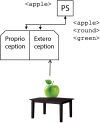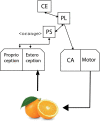Developing Self-Awareness in Robots via Inner Speech
- PMID: 33501185
- PMCID: PMC7805855
- DOI: 10.3389/frobt.2020.00016
Developing Self-Awareness in Robots via Inner Speech
Abstract
The experience of inner speech is a common one. Such a dialogue accompanies the introspection of mental life and fulfills essential roles in human behavior, such as self-restructuring, self-regulation, and re-focusing on attentional resources. Although the underpinning of inner speech is mostly investigated in psychological and philosophical fields, the research in robotics generally does not address such a form of self-aware behavior. Existing models of inner speech inspire computational tools to provide a robot with this form of self-awareness. Here, the widespread psychological models of inner speech are reviewed, and a cognitive architecture for a robot implementing such a capability is outlined in a simplified setup.
Keywords: cognitive cycle; human-robot interaction; inner speech; robot; self-awareness.
Copyright © 2020 Chella, Pipitone, Morin and Racy.
Figures









References
-
- Abbass H. A., Scholz J., Reid D. J. (eds.). (2018). Foundations of trusted autonomy: an introduction, in Foundations of Trusted Autonomy, Studies in Systems, Decision and Control (Cham: Springer; ), 117 10.1007/978-3-319-64816-3_1 - DOI
-
- Amit D. (1988). Modeling Brain Function. The World of Attractor Neural Networks. Cambridge: Cambridge University Press; 10.1017/CBO9780511623257 - DOI
-
- Arrabales R. (2012). Inner speech generation in a video game non-player character: from explanation to self? Int. J. Mach. Conscious. 4, 367–381. 10.1142/S1793843012400215 - DOI
-
- Baars B. J. (1997). In the Theather of Consciousness. The Workspace of the Mind. Oxford: Oxford University Press; 10.1093/acprof:oso/9780195102659.001.1 - DOI
LinkOut - more resources
Full Text Sources

